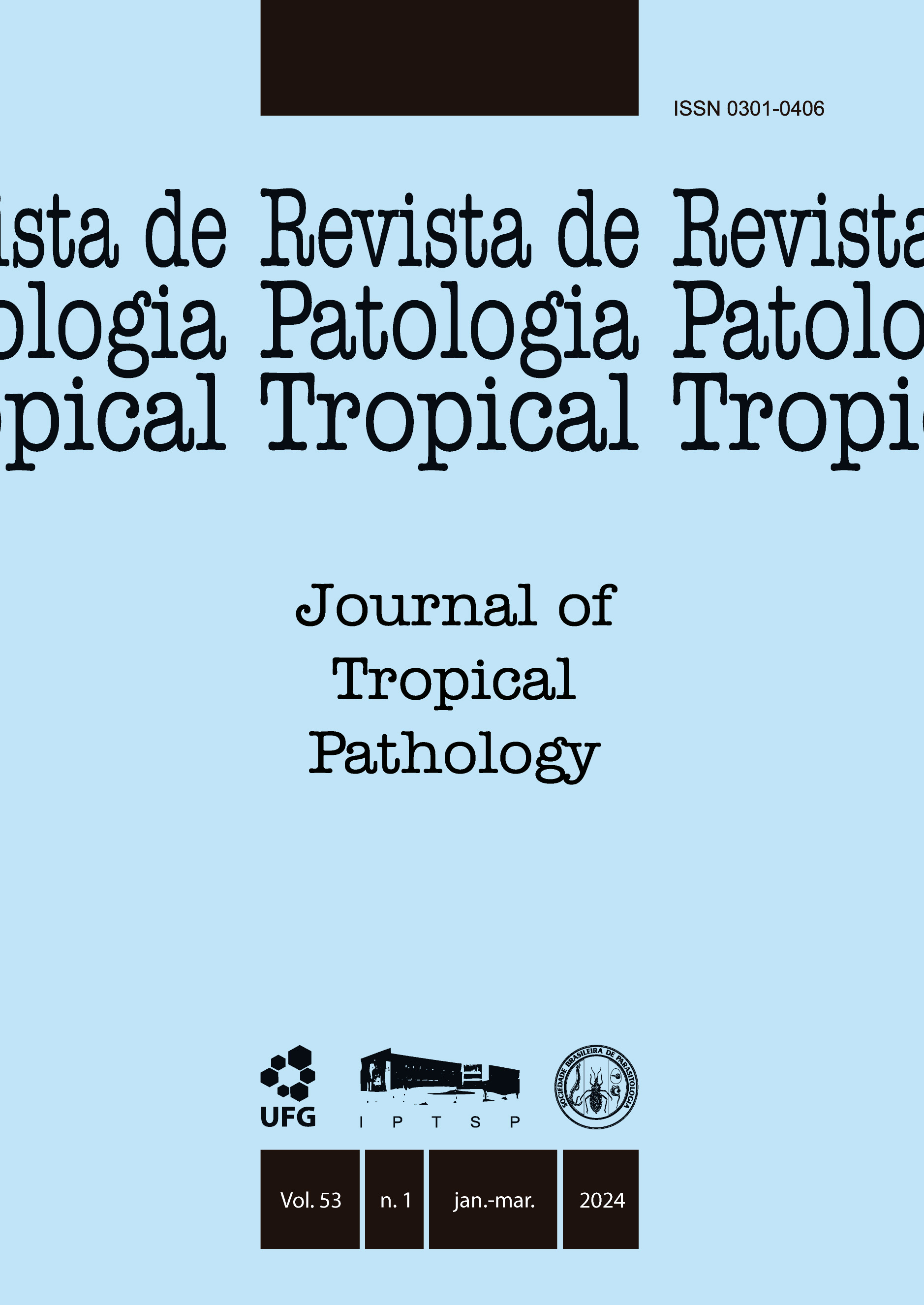Prevalence of enteroparasites in rural and urban children in the municipalities of Bocaiúva do Sul and Colombo, Paraná, Brazil
DOI:
https://doi.org/10.5216/rpt.v53i1.77216Abstract
The aim of this study was to diagnose enteroparasites and to relate them to socioeconomic factors in schoolchildren from the public system in the municipalities of Colombo and Bocaiúva do Sul, located in the Metropolitan Region from the city of Curitiba, Brazil. Fecal samples were processed using the modified Ritchie and Ziehl-Neelsen staining methods. Analysis of the risk factors, using Tukey test and Odds ratio (OR), was obtained by connecting questionnaires with parasitological results. Of the 414 schoolchildren analyzed, 32.4% (134) were positive for at least one enteroparasite species. The most prevalent were Blastocystis spp. (21.7%), Entamoeba coli (5.5%), Endolimax nana (5.5%), Giardia duodenalis (3.9%), Trichuris trichiura (3.7%) and Ascaris lumbricoides (2.9%). Schoolchildren from rural areas had a higher occurrence of enteric parasites (p<0.05), showing that is necessary to continue with health education, being careful with the food, basic sanitation and parasitological examination of feces before treatment.
KEY WORDS: Enteroparasites; monoparasitism; multiparasitism; children; socio-echonomic factors.
Downloads
Downloads
Published
How to Cite
Issue
Section
License
The manuscript submission must be accompanied by a letter signed by all authors stating the full name and email address, confirming that the material has not been published or is under consideration for publication elsewhere, and agreeing to transfer copyright in all media and formats for Journal of Tropical Pathology. The authors will not be paid for published articles. They are solely responsible for the content of those articles, even if the Editor holds the right to adjust them to the norms of the journal.
The reviewers will not be paid for the peer review process.

